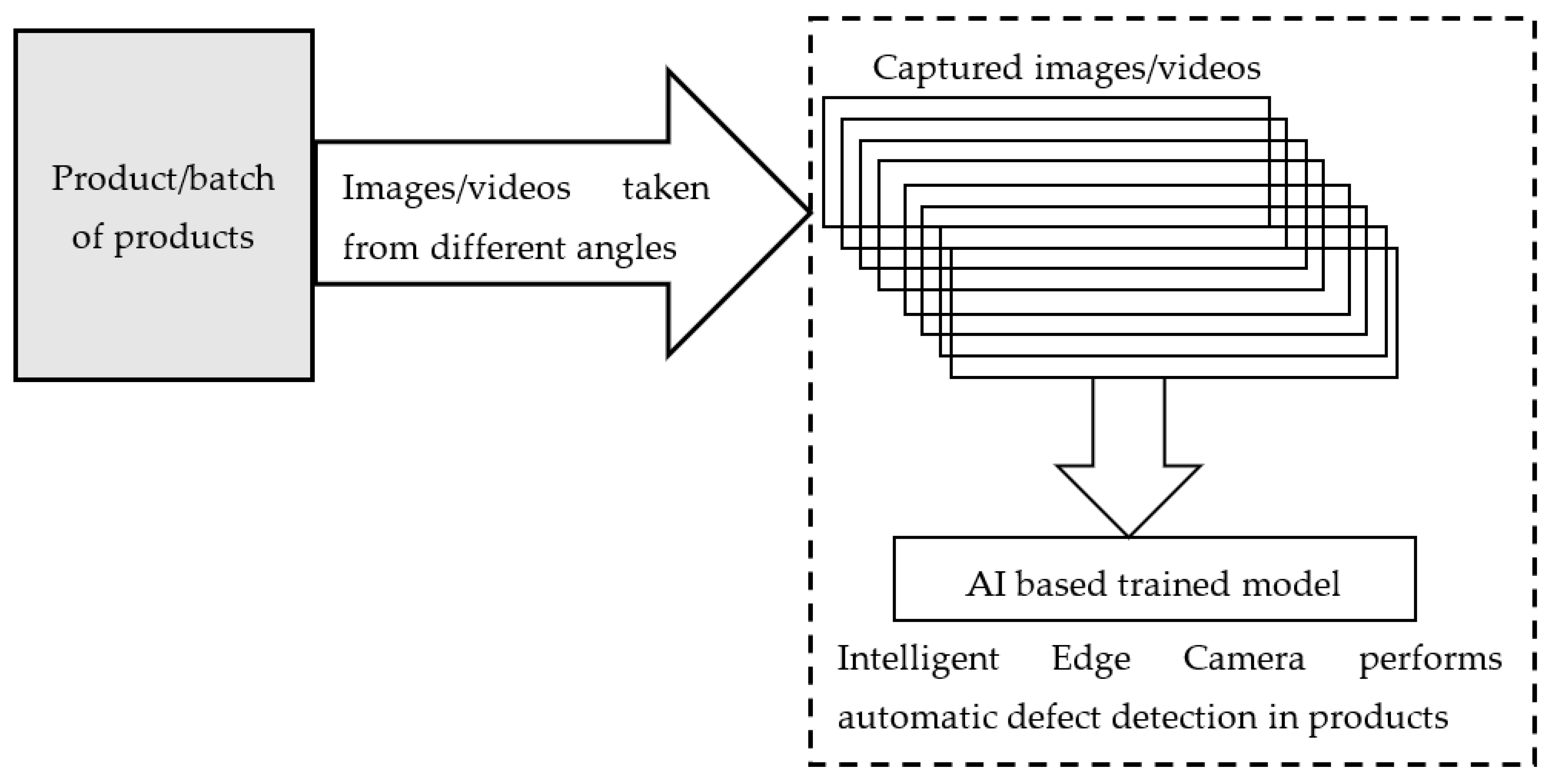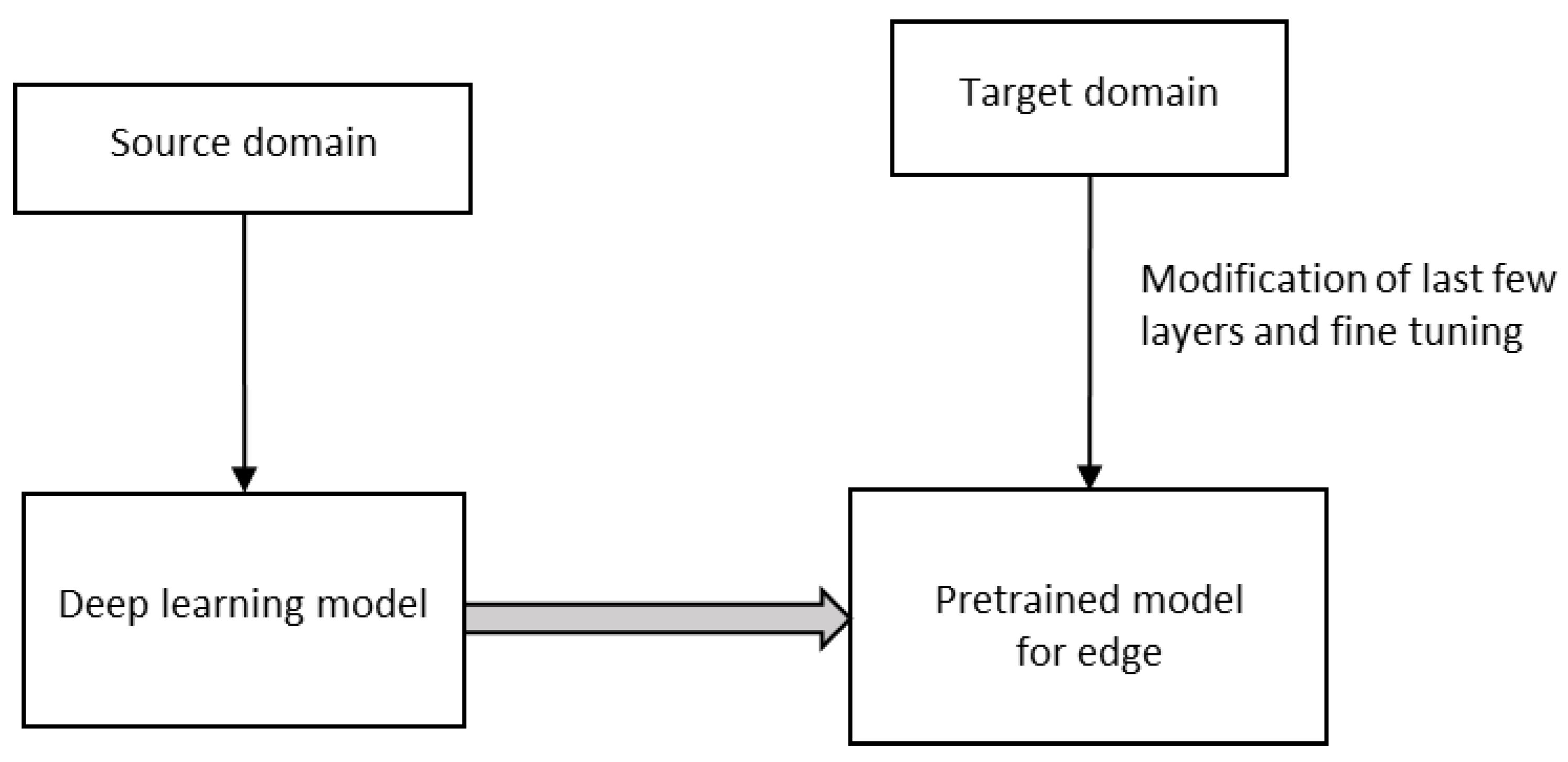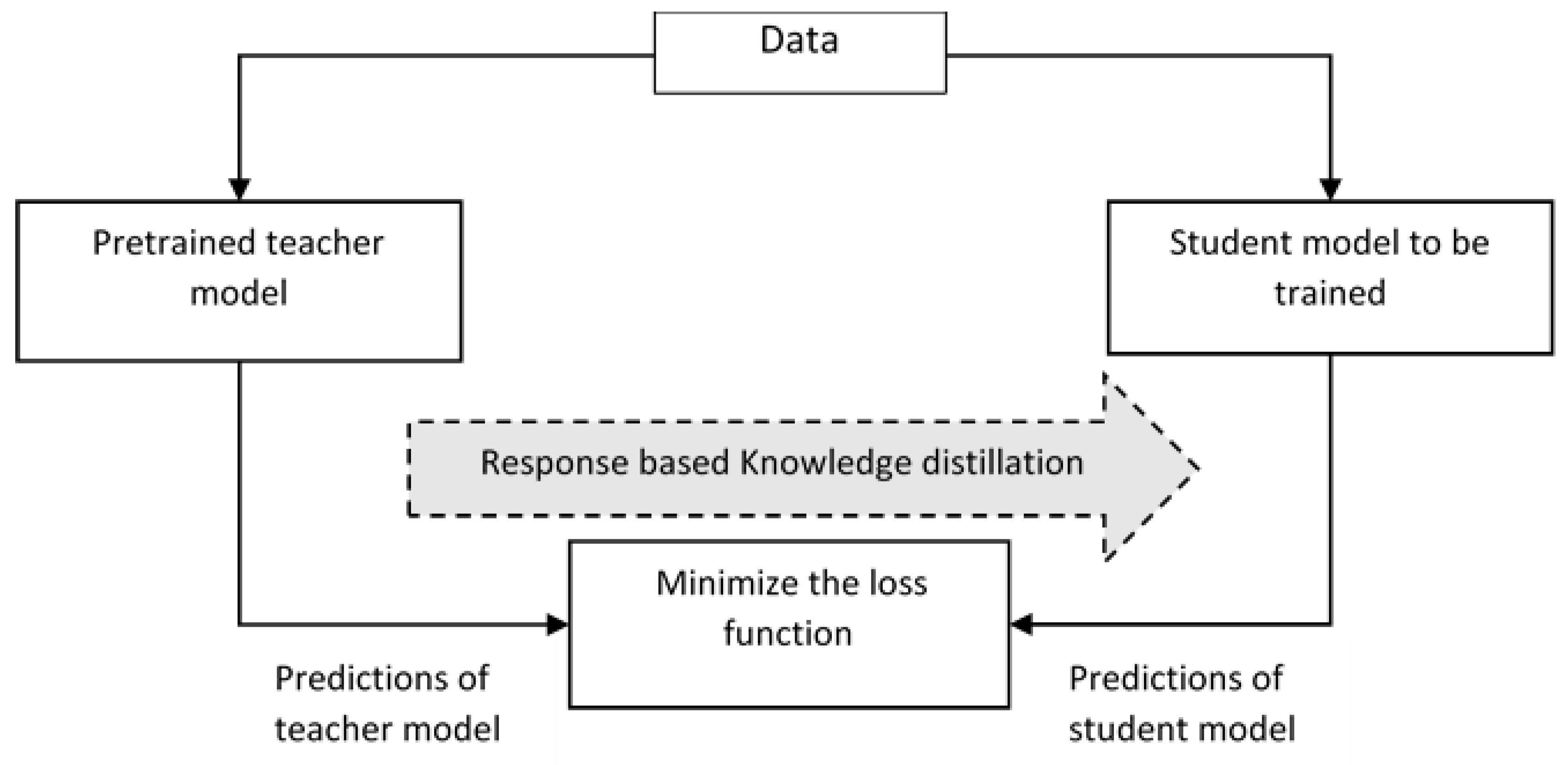You're using an outdated browser. Please upgrade to a modern browser for the best experience.
Please note this is a comparison between Version 2 by Catherine Yang and Version 1 by Pethuru Raj Chelliah.
Artificial Intelligence (Al) models are being produced and used to solve a variety of current and future business and technical problems. Therefore, AI model engineering processes, platforms, and products are acquiring special significance across industry verticals. For achieving deeper automation, the number of data features being used while generating highly promising and productive AI models is numerous, and hence the resulting AI models are bulky. Such heavyweight models consume a lot of computation, storage, networking, and energy resources. On the other side, increasingly, AI models are being deployed in IoT devices to ensure real-time knowledge discovery and dissemination.
- artificial intelligence
- AI model optimization
- edge AI
- federated learning
1. Introduction
The Internet of Things (IoT) has grown rapidly and generates a huge amount of data. Depending upon the domain and application, say, for example, smart traffic application, smart home, smart city, smart transport, etc., the acquired data are required to be processed immediately to produce meaningful insights and actionable decisions. In these cases, sending data to a centralized server and analyzing the data at the server involves greater latency [1] which even prohibits the real purpose of the application itself. Cloud computing is not adequate to meet the diverse needs of data analysis of today’s intelligent society, and so edge computing has evolved [2,3][2][3]. Edge computing has brought the processing of data to the point of acquisition by pushing applications, storage, and processing power away from the centralized data center and to the edge itself [4].
Centralized processing requires a massive amount of need to be transferred to the cloud for analysis. This not only requires more network bandwidth but also consumes time. Thus, it seriously suffers from latency, bandwidth-related issues, and huge transmission energy, which cannot be tolerated in applications involving augmented reality, video conferences, streaming applications, etc. However, in reality, every network has limited bandwidth. In addition, when data are transmitted to the cloud, it inherently prohibits the real-time analysis of data. However, many applications are in need of real-time analysis. For example, in the case of the healthcare domain, consider the case of a vital parameter-monitoring system that monitors parameters related to, say, COVID-19. Despite sending the monitored data to a centralized cloud server to which the physician or hospital is connected, which upon receiving the data, will analyze the health conditions of the patient, the monitoring system itself should be equipped with processing capability so that it can produce actionable and meaningful insights without latency. In addition, it itself will direct the required action and prevents the transfer of data to a centralized infrastructure. In scenarios where the analysis in edge becomes necessary, it should be conducted at the edge itself without centralized analytics.
2. Motivating Use Cases of Edge AI
Real-time analysis and decision making without latency—In contrast to cloud Al, edge AI can provide many benefits to the healthcare domain. For example, consider an individual is taking up his routine exercising. His vital parameters, namely pulse rate, blood glucose level, and blood pressure, are being monitored by wearable sensors and got updated in the edge application running on his mobile. Here, the mobile is the edge device, and it analyses the monitored parameters with the help of an artificial intelligence-based model, and it immediately takes the decision according to the analysis done, without sending the data to any other central server such as a cloud. The emphasis is that without any latency, the data are analyzed locally, and the decision is taken immediately. This is more important in the case of the healthcare domain, as the vital parameters are out of the normal threshold ranges. In such instances, immediately, the edge application intimates the physician and books the ambulance to a hospital. Edge AI in Remote robotics surgery—In medical exigency, robotics surgery would be carried out under the supervision of a surgeon from remote. In this situation, the robots are fully equipped with AI-based models, and it performs the concerned surgery with guidance and conversation with a remote physician. The key point to be noted here is that the evolving 5G communication makes surgery easy and safe. Edge AI integrated into cameras in airport security systems—When the video cameras installed in airports are integrated with video analytics applications, say, for example, detection of terrorist attacks, the attacks can be detected without latency. In conventional security applications, a series of video cameras capture the video of what is happening in the airport to cloud servers where AI-based models would run to detect or predict terrorist attacks. When the video analytics models run in the camera itself, based on the seriousness of the analysis, the device (i.e., video camera) makes a call to the police immediately to avoid the escape of any detected terrorist. Edge AI in predictive maintenance—In manufacturing and in similar other sectors, predictive maintenance is used to determine potential faults and abnormalities in processes. Conventionally, heartbeat signals which exhibit the healthiness of various sensors and machines are continuously collected and sent to a centralized cloud setup where AI-based analytics would be carried out to predict the faults. However, nowadays, the loT devices themselves are equipped with AI models to predict the possibility of faults, and immediately with no latency proper maintenance process will be carried which ultimately leads to increased production with reduced cost. Edge AI in quality assurance—Existing cameras and devices are incorporated with intelligent state-of-art neural network-based video analytics models, which are capable of executing Trillions of Operations Per Second. These devices have higher computer vision and scan a single product or huge batches of products at a time and find out faulty products with accuracy exceeding human capability. In addition to product inspection, edge devices are also equipped with relevant models for continuous and detailed factory monitoring. In addition, the complete assembly line of factories is thoroughly inspected by the installed cameras towards production with zero defects as shown in Figure 1.
Figure 1.
Block diagram of edge AI-based defect detection.
3. Learning-Related Strategies
3.1. Federated Learning
Federated learning is a distributed, and collaborative learning method that allows different edge devices with different datasets to work together to train a global model. In this learning, a single global model is stored in a centralized cloud infrastructure. At first, the global model is shared with devices with initial weights. Now the edge device collects the real-time data and trains the model locally with the new data for one or several iterations in order to update the weights so that the loss function is minimized [19][6]. The updated weights are sent to a centralized server. Here the data are not sent to the centralized server. Only the weights are sent to the server with encryption [4]. The centralized server receives the updated weights from several edge devices. It computes the average of updated weights, and then it updates the weights of the global model. Then the global model is again shared with edge devices. The concept of federated learning is shown in Figure 72. Federated learning could cater to the needs of modern IoT-based applications and turns out to be the basis for next-generation artificial intelligence [20][7].
Figure 72.
Concept of federated learning in edge servers (shown with four nodes).

Figure 83.
Federated learning in a peer-to-peer model.
3.2. Deep Transfer Learning (DTL)
Edge devices such as IoT, webcam, robots, intelligent medical equipment, etc., are very useful for many healthcare applications during a pandemic, say, for example, COVID-19. Both shortages of reliable datasets, limited hardware, and power support of edge devices prohibit the usage of deep learning models in them. However, in Deep Transfer Learning (DTL), the knowledge of an already learned model is used to solve a new task, as in Figure 94. DTL significantly reduces training time and the requirement of resources for a target domain-specific task for a fixed feature extraction or fine-tuning [36,37][23][24].
Figure 94.
Deep transfer learning.
3.3. Knowledge Distillation
Large machine learning models have millions of parameters associated with them, which makes the deployment of the model in edge devices infeasible. So, the knowledge gained from large models is transferred to small models which run on edge devices. Here, the large models serve as the teacher model, and the small model is such as the student model. The teacher model refers to a larger model, and it alone gets pre-trained. The learned knowledge from the teacher model is transferred to the student model through knowledge distillation, as in Figure 105. The knowledge distillation helps in improving the accuracy of the student model despite the constrained hardware [38][25]. Different knowledge distillation techniques, namely response-based distillation, where the prediction performance of output layers of the teacher model and student model are compared using a loss function which shows the difference between the models and the loss function is minimized so that the accuracy of student model approaches that of the teacher model. In contrast to response-based distillation, in feature-based distillation teacher model distills the intermediate features of the student model. Here, the position of distillation is moved prior to the output layer [39,40][26][27]. Here the student mimics by minimizing the loss function that is computed according to the intermediate layers. Relation based distillation is one in which the difference between the relationship between different feature maps is captured as a gram matrix, and the corresponding loss function is minimized. The student model reduces the computation cost and memory usage [41][28].
Figure 105.
Knowledge distillation.
References
- Vahid Dastjerdi, A.; Buyya, R. Fog Computing: Helping the Internet of Things Realize. IEEE Comput. Soc. 2016, 49, 112–116.
- Cao, K.; Liu, Y.; Meng, G.; Sun, Q. An Overview on Edge Computing Research. IEEE Access 2020, 8, 85714–85728.
- Cui, L.; Yang, S.; Chen, F.; Ming, Z.; Lu, N.; Qin, J. A survey on application of machine learning for Internet of Things. Int. J. Mach. Learn. Cybern. 2018, 9, 1399–1417.
- Pooyandeh, M.; Sohn, I. Edge Network Optimization Based on AI Techniques: A Survey. Electronics 2021, 10, 2830.
- Chen, M.; Liu, W.; Wang, T.; Liu, A.; Zeng, Z. Edge intelligence computing for mobile augmented reality with deep reinforcement learning approach. Comput. Netw. 2021, 195, 108186.
- Xia, Q.; Ye, W.; Tao, Z.; Wu, J.; Li, Q. A survey of federated learning for edge computing: Research problems and solutions. High-Confid. Comput. 2021, 1, 100008.
- Abreha, H.G.; Hayajneh, M.; Serhani, M.A. Federated Learning in Edge Computing: A Systematic Survey. Sensors 2022, 22, 450.
- Wink, T.; Nochta, Z. An Approach for Peer-to-Peer Federated Learning. In Proceedings of the 2021 51st Annual IEEE/IFIP International Conference on Dependable Systems and Networks Workshops (DSN-W), Taipei, Taiwan, 21–24 June 2021; pp. 150–157.
- Lian, X.; Zhang, C.; Zhang, H.; Hsieh, C.-J.; Zhang, W.; Liu, J. Can decentralized algorithms outperform centralized algorithms? A case study for decentralized parallel stochastic gradient descent. In Proceedings of the Advances in Neural Information Processing Systems 30: Annual Conference on Neural Information Processing Systems 2017, Long Beach, CA, USA, 4–9 December 2017; pp. 5330–5340.
- Truong, N.; Sun, K.; Wang, S.; Guitton, F.; Guo, Y.K. Privacy preservation in federated learning: An insightful survey from the GDPR perspective. Comput. Secur. 2021, 110, 102402.
- Brecko, A.; Kajati, E.; Koziorek, J.; Zolotova, I. Federated Learning for Edge Computing: A Survey. Appl. Sci. 2022, 12, 9124.
- Li, Q.; Wen, Z.; Wu, Z.; Hu, S.; Wang, N.; Li, Y.; Liu, X.; He, B. A Survey on Federated Learning Systems: Vision, Hype and Reality for Data Privacy and Protection. IEEE Trans. Knowl. Data Eng. 2021.
- Makkar, A.; Ghosh, U.; Rawat, D.B.; Abawajy, J.H. FedLearnSP: Preserving Privacy and Security Using Federated Learning and Edge Computing. IEEE Consum. Electron. Mag. 2022, 11, 21–27.
- Aledhari, M.; Razzak, R.; Parizi, R.M.; Saeed, F. Federated Learning: A Survey on Enabling Technologies, Protocols, and Applications. IEEE Access 2020, 8, 140699–140725.
- Zhua, H.; Xub, J.; Liua, S.; Jin, Y. Federated Learning on Non-IID Data: A Survey. Neurocomputing 2021, 465, 371–390.
- Hsu, T.M.-H.; Qi, H.; Brown, M. Measuring the effects of nonidentical data distribution for federated visual classification. arXiv 2019, arXiv:1909.06335.
- Kulkarni, V.; Kulkarni, M.; Pant, A. Survey of personalization techniques for federated learning. In Proceedings of the 2020 Fourth World Conference on Smart Trends in Systems, Security and Sustainability (WorldS4), London, UK, 27–28 July 2020; pp. 794–797.
- Wu, P.; Imbiriba, T.; Park, J.; Kim, S.; Closas, P. Personalized Federated Learning over non-IID Data for Indoor Localization. arXiv 2021, arXiv:2107.04189v2.
- Huang, Y.; Chu, L.; Zhou, Z.; Wang, L.; Liu, J.; Pei, J.; Zhang, Y. Personalized cross-silo federated learning on non-IID data. In Proceedings of the AAAI Conference on Artificial Intelligence, Virtual, 2–9 February 2021.
- Wang, C.-H.; Huang, K.-Y.; Chen, J.-C.; Shuai, H.-H.; Cheng, W.-H. Heterogeneous Federated Learning Through Multi-Branch Network. In Proceedings of the 2021 IEEE International Conference on Multimedia and Expo (ICME), Shenzhen, China, 5–9 July 2021; pp. 1–6.
- Yu, F.; Zhang, W.; Qin, Z.; Xu, Z.; Wang, D.; Liu, C.; Tian, Z.; Chen, X. Heterogeneous Federated Learning. arXiv 2020, arXiv:2008.06767.
- Khan, L.U.; Saad, W.; Han, Z.; Hossain, E.; Hong, C.S. Federated Learning for Internet of Things: Recent Advances, Taxonomy, and Open Challenges. IEEE Commun. Surv. Tutor. 2021, 23, 1759–1799.
- Sufian, A.; Ghosh, A.; Sadiq, A.S.; Smarandache, F. A Survey on Deep Transfer Learning to Edge Computing for Mitigating the COVID-19 Pandemic. J. Syst. Archit. 2020, 108, 101830.
- Chen, Q.; Zheng, Z.; Hu, C.; Wang, D.; Liu, F. On-edge multi-task transfer learning: Model and practice with data-driven task allocation. IEEE Trans. Parallel Distrib. Syst. 2020, 31, 1357–1371.
- Alkhulaifi, A.; Alsahli, F.; Ahmad, I. Knowledge distillation in deep learning and its applications. PeerJ Comput. Sci. 2021, 7, e474.
- Heo, B.; Kim, J.; Yun, S.; Park, H.; Kwak, N.; Choi, J.Y. A comprehensive overhaul of feature distillation. In Proceedings of the IEEE/CVF International Conference on Computer Vision (ICCV) 2019, Seoul, Republic of Korea, 27 October–2 November 2019.
- Wang, L.; Yoon, K. Knowledge Distillation and Student-Teacher Learning for Visual Intelligence: A Review and New Outlooks. IEEE Trans. Pattern Anal. Mach. Intell. 2022, 44, 3048–3068.
- Tao, Z.; Xia, Q.; Li, Q. Neuron Manifold Distillation for Edge Deep Learning. In Proceedings of the 2021 IEEE/ACM 29th International Symposium on Quality of Service (IWQOS), Tokyo, Japan, 25–28 June 2021; pp. 1–10.
- Li, D.; Wang, J. FedMD: Heterogenous federated learning via model distillation. arXiv 2019, arXiv:1910.03581.
- Jiang, D.; Shan, C.; Zhang, Z. Federated Learning Algorithm Based on Knowledge Distillation. In Proceedings of the 2020 International Conference on Artificial Intelligence and Computer Engineering (ICAICE), Beijing, China, 23–25 October 2020; pp. 163–167.
More
